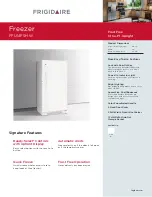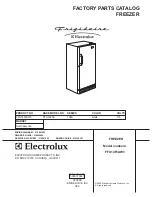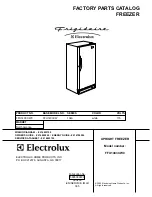
For Customer Services & Spare Parts please call
0845 208 8750
Opening times: Monday - Friday 8am – 6pm & Saturday 9am – 1pm
or visit us at
10
Never use sharp metal tools as it may damage the appliance.
Never use an electrical heater, this may cause an electric shock.
Note: Care must be taken when performing the following procedure.
Defrost twice a year or when a frost layer of approximately 7 mm (1/4”) has
formed.
•
6 hours before the defrosting process, set the thermostat knob at “MAX”
position to make sure the food is at the lowest temperature before removing
the frozen foods. All food should be wrapped in several layers of newspaper
and stored in a cool place (e.g. fridge or larder).
•
Switch off the appliance at the socket outlet and pull out the mains plug.
•
Remove the freezer basket. Leave the lid open. Containers of warm water (not
hot) may be placed carefully in the freezer to speed up the defrosting process.
•
Never use hairdryers, electrical heaters or other such electrical appliances for
defrosting.
•
When the ice has melted, drain the water in the bottom of the freezer by
removing the rubber cap located inside the appliance in the back, left hand side
as illustrated below.Fig.1 (NOTES: PLEASE KEEP THE RUBBER COVER SAFE
DURING THE DEFROSTING PROCESS AND PUT IT BACK AFTER THE DEFROSTING
PROCESS IS COMPLETE)
•
Situated at the rear bottom corner of the appliance, is a small plastic drain tap.
Place a container under the drain tap to catch the defrosted water. Pull out the
tap just enough to where you can see the hole in the pipe, rotate the hole so
that it is at the bottom, water will flow into the container. This may take several
attempts to drain all the water. After the draining has been completed, replace
the rubber cap in the appliance and rotate the drainage tap so that the hole is
facing upwards and push it flush to the appliance. Fig.2,3,4.
•
Wipe up any spillages that may have occurred.
Defrosting
Fig.1
Fig.2
Fig.3
Fig.4


































